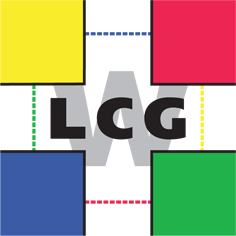Grid computing
 The Large Hadron Collider (LHC), built at CERN near Geneva, is the largest scientific instrument on the planet. When it begins full operation in 2010, it will produce roughly 15 Petabytes (15 million Gigabytes) of data annually, which thousands of scientists around the world will access and analyse. Grid Computing is a mandatory ingredient to build and maintain a data storage and analysis infrastructure for the entire high energy physics community that will use the LHC.
The Large Hadron Collider (LHC), built at CERN near Geneva, is the largest scientific instrument on the planet. When it begins full operation in 2010, it will produce roughly 15 Petabytes (15 million Gigabytes) of data annually, which thousands of scientists around the world will access and analyse. Grid Computing is a mandatory ingredient to build and maintain a data storage and analysis infrastructure for the entire high energy physics community that will use the LHC.
The data from the LHC experiments will be distributed around the globe, according to a four -tiered model. A primary backup will be recorded on tape at CERN, the "Tier-0" centre of LCG. After initial processing, this data will be distributed to a series of Tier-1 centres, large computer centres with sufficient storage capacity for a large fraction of the data, and with round-the-clock support for the Grid.
The Tier-1 centres will make data available to Tier-2 centres, each consisting of one or several collaborating computing facilities, which can store sufficient data and provide adequate computing power for specific analysis tasks. Individual scientists will access these facilities through Tier-3 computing resources, which can consist of local clusters in a University Department or even individual PCs, and which may be allocated to LCG on a regular basis.
Our group is strongly involved in the support of the commissioning and operation of Tier-1 and Tier-2 centres (GridKa, LRZ-LMU, ATLAS-DE cloud). In addition, we participate in the development of tools for grid computing (GANGA, Panda, DQ2). We also work on tools which facilitate grid computing for end-users. One example is distributed analysis: a typical data analysis at LHC involves execution and control of 100 or 1000 physics analysis jobs which must be created and submitted to the Grid resources. The execution needs to be monitored and the results collected. Another very challenging problem is interactive Grid computing. The user has the possibility to execute and control interactively in the order of 1000 programs which run simultaneously on a worldwide distributed Grid system. This opens up a new domain of computing problems which have to be managed and controlled by special software services (HammerCloud, GangaRobot, Proof).
More Informations can be found at the pages of the LCG Computing Grid Project and the ATLAS Computing Wiki.
Links to various grid related projects
- GridKa Tier1, LRZ-LMU Tier2 and ATLAS-DE cloud
- GANGA Projekt
- HammerCloud Grid Stress Testing System
- GangaRobot Functional Test System
- DQ2 Distributed Data Management
- Panda Project
- dCache Support Group
- D-Grid Projekt Seite
- Munich Software WIKI page

